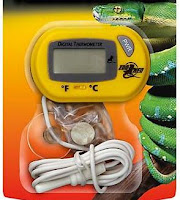Today, the cornish cross went outside into the hoop-coop. It's cooooold tonight, so hopefully they will stay warm enough. We started with the 50 watt infrared light, but it was barely warming the coop, so we went to the 75 watt. I just checked on them. It's 45F outside right now, but they are moving around in the coop and not all huddled together, so that's a good sign. We have never tried the fall season for new chicks before, so this is all new territory. These guys are four weeks old, and have most of their feathers. Have my fingers crossed that this is going to work.
Update: October 10, 2017
The temps inside the coop dropped pretty low Monday morning, down into the mid 40s(F) and the birds were a bit lethargic Monday morning at 7:30. Monday night, we placed a heavy bed comforter and another canvas tarp over the coop. That kept the temps inside the coop about 12 degrees warmer all night. This morning, at 7:30, the temp was 52 inside the coop. We may want to add a blue plastic tarp if it rains tonight, to protect the comforter from getting wet. The chicks were more active and alert this morning, so that's a good sign!
The photos below are from Tuesday morning. I know it is a goofy look, but, at least it helps to keep the warmth inside the coop. This coop was originally designed to house two heritage sized turkeys, from spring to fall, so, yah, it is what it is. To determine the approximate inside temp, we are using a digital terrarium thermometer, with the readout taped under the flap on the outside of the coop, and the gauge hanging inside, near the middle of the coop, where the chicks can't peck at it. Plus, in addition to the heat lamp that we have hanging in the coop (a safe distance from the ceiling, and from the birds), we have a 50W LED light on a timer that comes on 12 hours per day to help with the night vs. day situation since the door light, especially on cloudy days, is not enough light for the chicks' circadian cycle.
The chicks are only four weeks old, so they really are not quite ready to deal with the outside temps yet. But they grow quickly into stinky pooping machines, and we could not handle the smell wafting through the garage any longer.
Oh, yah, the white board to the side is the "door cover" to help with a sense of security for the birds at night. The coyotes and raccoons will look through the plexiglass at night, and it scares the birds to see these predators leering at them. We fasten the board over the plexiglass to impede the view at night. The coyotes were very active last night in the area, and I had to go check on the birds several times for that, in addition to the cool temps.
Update: October 10, 2017
The temps inside the coop dropped pretty low Monday morning, down into the mid 40s(F) and the birds were a bit lethargic Monday morning at 7:30. Monday night, we placed a heavy bed comforter and another canvas tarp over the coop. That kept the temps inside the coop about 12 degrees warmer all night. This morning, at 7:30, the temp was 52 inside the coop. We may want to add a blue plastic tarp if it rains tonight, to protect the comforter from getting wet. The chicks were more active and alert this morning, so that's a good sign!
The photos below are from Tuesday morning. I know it is a goofy look, but, at least it helps to keep the warmth inside the coop. This coop was originally designed to house two heritage sized turkeys, from spring to fall, so, yah, it is what it is. To determine the approximate inside temp, we are using a digital terrarium thermometer, with the readout taped under the flap on the outside of the coop, and the gauge hanging inside, near the middle of the coop, where the chicks can't peck at it. Plus, in addition to the heat lamp that we have hanging in the coop (a safe distance from the ceiling, and from the birds), we have a 50W LED light on a timer that comes on 12 hours per day to help with the night vs. day situation since the door light, especially on cloudy days, is not enough light for the chicks' circadian cycle.
The chicks are only four weeks old, so they really are not quite ready to deal with the outside temps yet. But they grow quickly into stinky pooping machines, and we could not handle the smell wafting through the garage any longer.
Oh, yah, the white board to the side is the "door cover" to help with a sense of security for the birds at night. The coyotes and raccoons will look through the plexiglass at night, and it scares the birds to see these predators leering at them. We fasten the board over the plexiglass to impede the view at night. The coyotes were very active last night in the area, and I had to go check on the birds several times for that, in addition to the cool temps.



